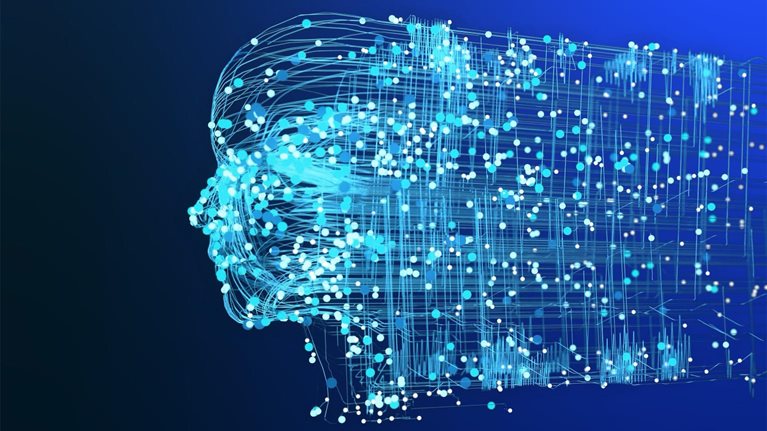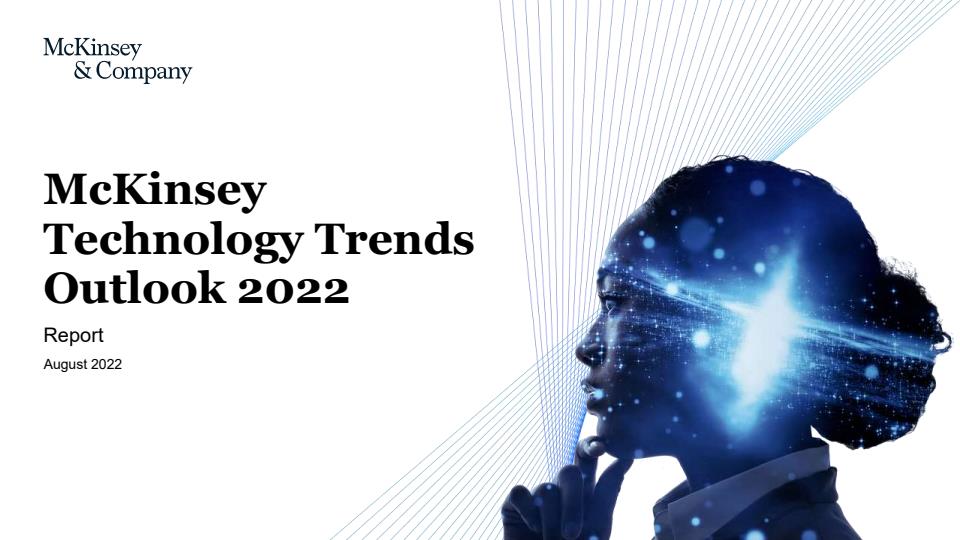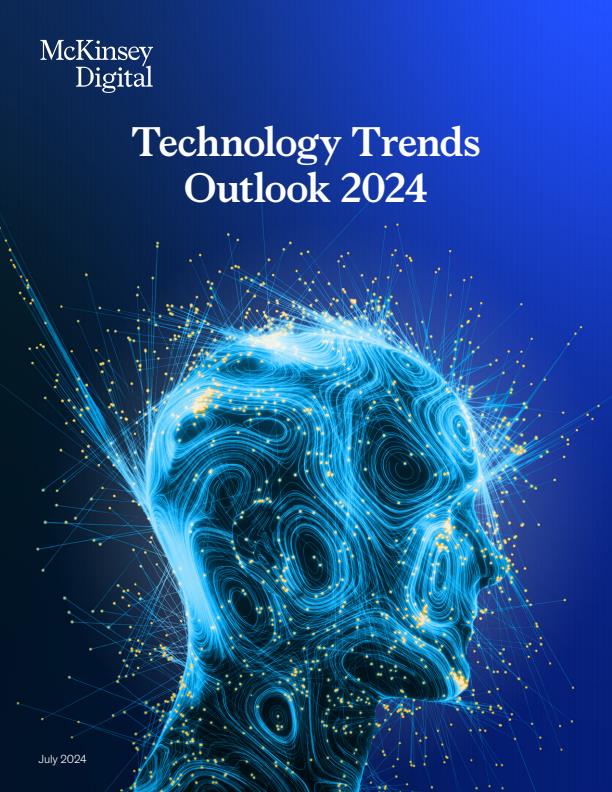“`html
Navigating the Future with McKinsey’s 2025 Technology Trends
Estimated reading time: 12 minutes
Key Takeaways
- The pace of technological change is accelerating, making it crucial for businesses to understand emerging technology in 2025.
- McKinsey’s 2025 technology trends outlook provides essential insights for navigating this dynamic landscape and ensuring future competitiveness.
- AI, particularly agentic AI, is a principal force in business transformation, capable of autonomous workflow execution.
- Adopting new technologies requires robust frameworks for risk, security, ethics, and trust.
- Key sectors like healthcare, manufacturing, finance, and logistics face significant disruption and opportunity.
- Proactive strategies include investing in AI readiness, piloting new technologies, and fostering strong governance.
Table of contents
- Navigating the Future with McKinsey’s 2025 Technology Trends
- Key Takeaways
- Unveiling the McKinsey 13 Frontier Tech Trends for 2025
- The AI Revolution: The Principal Force in Business Transformation
- Key Takeaways and Actionable Strategies for Businesses
- Final Thoughts: Embracing the Future of Technology
- Frequently Asked Questions
The world of technology is moving at an unprecedented pace. For businesses aiming to thrive, not just survive, in the coming years, *understanding emerging technology in 2025* is no longer a luxury but a fundamental necessity. Staying ahead of the curve requires not only awareness but a strategic understanding of how these advancements will shape industries and redefine competitive landscapes. This is precisely where the **McKinsey technology trends outlook 2025** emerges as an indispensable guide. This seminal report offers critical insights for leaders, illuminating the path forward and ensuring future competitiveness. In this post, we will unpack the key findings from McKinsey’s outlook, with a particular focus on the profound **impact of AI on business transformation** and the broader implications of **understanding emerging technology in 2025**. We’ll delve into the **McKinsey 13 frontier tech trends** that are poised to define the technological frontier.

Unveiling the McKinsey 13 Frontier Tech Trends for 2025
McKinsey has identified 13 significant frontier technologies that are set to dramatically shape the business landscape in 2025 and beyond. These technologies, as detailed in the **McKinsey 13 frontier tech trends** report and the **McKinsey technology trends outlook 2025**, are not isolated phenomena but often interconnected forces that will drive innovation and disruption. McKinsey categorizes these trends into three broad, yet critical, areas: the AI Revolution, Compute & Tech Frontiers, and Cutting-edge Engineering. Understanding these trends is fundamental to **understanding emerging technology in 2025**.
AI Revolution
- Agentic AI: This represents a significant leap beyond current AI capabilities. Agentic AI refers to autonomous “digital coworkers” that are designed to plan, execute, and manage complex, multi-step workflows independently. Imagine AI agents that can handle intricate tasks like automated care coordination in healthcare, significantly reducing administrative burdens and improving patient outcomes, or empowering financial analysts with enhanced productivity, potentially boosting their output by up to 60%. The implications for operational efficiency and the **impact of AI on business transformation** are immense. (Source: [https://dhinsights.org/blog/mckinseys-2025-tech-trends-report-finds-healthcare-caught-between-ai-promise-and-perils/](https://dhinsights.org/blog/mckinseys-2025-tech-trends-report-finds-healthcare-caught-between-ai-promise-and-perils/) | [https://www.mckinsey.com/featured-insights/mckinsey-live/webinars/the-future-of-business-13-tech-trends-that-matter](https://www.mckinsey.com/featured-insights/mckinsey-live/webinars/the-future-of-business-13-tech-trends-that-matter) | [https://www.mckinsey.com/capabilities/mckinsey-digital/our-insights/the-top-trends-in-tech](https://www.mckinsey.com/capabilities/mckinsey-digital/our-insights/the-top-trends-in-tech))
- Artificial Intelligence (General): Beyond agentic AI, the broader surge in AI adoption is a dominant force. This encompasses advancements in machine learning, natural language processing, and computer vision, all driving widespread process automation, sophisticated analytics, hyper-personalization of customer experiences, and the development of entirely new products and services across virtually every industry. The **impact of AI on business transformation** is undeniable. (Source: [https://www.mckinsey.com/capabilities/mckinsey-digital/our-insights/the-top-trends-in-tech](https://www.mckinsey.com/capabilities/mckinsey-digital/our-insights/the-top-trends-in-tech))

Compute & Tech Frontiers
- Application-Specific Semiconductors: As AI and other advanced computing demands grow, the need for specialized chips—application-specific integrated circuits (ASICs) and field-programmable gate arrays (FPGAs)—becomes paramount. These semiconductors are designed for maximum efficiency and power in AI, graphics processing, and edge computing applications, enabling more complex computations closer to the data source. (Source: [https://www.mckinsey.com/capabilities/mckinsey-digital/our-insights/the-top-trends-in-tech](https://www.mckinsey.com/capabilities/mckinsey-digital/our-insights/the-top-trends-in-tech))
- Advanced Connectivity: The backbone of many emerging technologies, enhanced networks such as 5G and beyond, are critical enablers. They provide the high bandwidth, low latency, and massive capacity required for technologies like IoT, autonomous systems, and immersive experiences to function effectively. (https://www.penbrief.com/unstoppable-5g-connectivity-future)
- Cloud and Edge Computing: The interplay between centralized cloud infrastructure and distributed edge computing is vital. Cloud provides scalable processing and storage, while edge computing offers real-time data processing and reduced latency at the point of data generation, crucial for applications requiring immediate responses. (https://www.penbrief.com/revolutionary-edge-computing-breakthroughs-hybrid-cloud)
- Immersive Reality: Beyond entertainment, immersive technologies like virtual reality (VR) and augmented reality (AR) are finding critical applications in professional settings. These include advanced training simulations, remote collaboration tools, and sophisticated design and visualization platforms, transforming how we interact with digital information and each other. (https://www.penbrief.com/meta-quest-3-unveiling-a-revolutionary-virtual-reality-experience/)
- Digital Trust & Cybersecurity: As our world becomes increasingly connected and reliant on digital systems, the importance of digital trust and robust cybersecurity cannot be overstated. Protecting sensitive data, ensuring system integrity, and building confidence in digital interactions are paramount challenges and opportunities. (https://www.penbrief.com/protect-smart-home-cyber-threats) (https://www.penbrief.com/cybersecurity-tips-stay-safe-online)
- Quantum Technologies: While still in its nascent stages, quantum computing holds the potential for paradigm-shifting breakthroughs. Its ability to perform calculations far beyond the reach of classical computers could revolutionize fields such as materials science, drug discovery, cryptography, and complex optimization problems. (Source: [https://www.mckinsey.com/capabilities/mckinsey-digital/our-insights/the-top-trends-in-tech](https://www.mckinsey.com/capabilities/mckinsey-digital/our-insights/the-top-trends-in-tech)). (https://www.penbrief.com/mind-blowing-quantum-breakthroughs-updates)

Cutting-edge Engineering
- Robotics: Advances in robotics are moving beyond industrial automation. Increasingly sophisticated robots are being deployed in logistics, healthcare, agriculture, and even domestic settings, capable of more complex manipulation, navigation, and human-robot interaction. (https://www.penbrief.com/zoox-robotaxi-production-facility-capacity)
- Mobility: Innovations in transportation and logistics are reshaping how goods and people move. This includes the development of autonomous vehicles, electric propulsion systems, advanced battery technologies, and intelligent logistics management platforms, all contributing to a more efficient and sustainable future of movement. (https://www.penbrief.com/unbeatable-ai-powered-transportation-2025)
- Bioengineering: The convergence of biology and engineering is unlocking new frontiers in healthcare, agriculture, and materials science. Gene editing, synthetic biology, and personalized medicine are just a few areas where bioengineering is poised to revolutionize industries and address pressing global challenges. (https://www.penbrief.com/revolutionary-ai-medical-breakthroughs-healthcare)
- Space Technologies: Driven by both governmental and commercial efforts, space exploration and utilization are advancing rapidly. Technologies related to satellite deployment, space-based manufacturing, resource extraction, and advanced propulsion systems are opening up new economic and scientific possibilities. (https://www.penbrief.com/game-changing-ai-powered-space-tech)
- Energy & Sustainability Technologies: With the global imperative to address climate change, technologies focused on renewable energy generation, energy storage, carbon capture, and sustainable resource management are becoming increasingly critical. These innovations are essential for building a greener and more resilient future. (https://www.penbrief.com/revolutionary-sustainable-computing-greener-future)

Grasping these diverse advancements is paramount for **understanding emerging technology in 2025** and positioning businesses for success in a rapidly evolving world. (Source: [https://www.mckinsey.com/featured-insights/mckinsey-live/webinars/the-future-of-business-13-tech-trends-that-matter](https://www.mckinsey.com/featured-insights/mckinsey-live/webinars/the-future-of-business-13-tech-trends-that-matter) | [https://www.mckinsey.com/capabilities/mckinsey-digital/our-insights/the-top-trends-in-tech](https://www.mckinsey.com/capabilities/mckinsey-digital/our-insights/the-top-trends-in-tech) | [https://www.mckinsey.com/~/media/mckinsey/business%20functions/mckinsey%20digital/our%20insights/the%20top%20trends%20in%20tech%202025/mckinsey-technology-trends-outlook-2025.pdf](https://www.mckinsey.com/~/media/mckinsey/business%20functions/mckinsey%20digital/our%20insights/the%20top%20trends%20in%20tech%202025/mckinsey-technology-trends-outlook-2025.pdf)). (https://www.penbrief.com/key-technology-trends-2025)
The AI Revolution: The Principal Force in Business Transformation
Artificial intelligence is not merely one trend among many; it is a foundational “amplifier” that accelerates innovation across almost all other technological frontiers. Its pervasive influence is reshaping industries, enhancing human capabilities, and driving a profound **impact of AI on business transformation**. (Source: [https://www.mckinsey.com/~/media/mckinsey/email/monthly/2025/2025-08-02a.html](https://www.mckinsey.com/~/media/mckinsey/email/monthly/2025/2025-08-02a.html) | [https://www.mckinsey.com/capabilities/mckinsey-digital/our-insights/the-top-trends-in-tech](https://www.mckinsey.com/capabilities/mckinsey-digital/our-insights/the-top-trends-in-tech)). (https://www.penbrief.com/how-ai-is-changing-the-world) (https://www.penbrief.com/how-ai-is-transforming-businesses-guide)

Central to this transformation is the rise of **agentic AI**. This is not simply about generating text or images; agentic AI represents a paradigm shift towards autonomous systems capable of independently executing complex, multi-step workflows. These sophisticated AI agents can be deployed across a wide spectrum of applications: from managing intricate care coordination in healthcare to automating complex analytical tasks for finance professionals, optimizing logistics and supply chains, enhancing cyber defense capabilities, revolutionizing customer service interactions through intelligent chatbots, and enabling sophisticated predictive maintenance in manufacturing. The potential for increased efficiency, reduced errors, and novel service delivery is staggering, fundamentally altering business operations and the **impact of AI on business transformation**. (Source: [https://dhinsights.org/blog/mckinseys-2025-tech-trends-report-finds-healthcare-caught-between-ai-promise-and-perils/](https://dhinsights.org/blog/mckinseys-2025-tech-trends-report-finds-healthcare-caught-between-ai-promise-and-perils/) | [https://www.mckinsey.com/featured-insights/mckinsey-live/webinars/the-future-of-business-13-tech-trends-that-matter](https://www.mckinsey.com/featured-insights/mckinsey-live/webinars/the-future-of-business-13-tech-trends-that-matter) | [https://www.mckinsey.com/capabilities/mckinsey-digital/our-insights/the-top-trends-in-tech](https://www.mckinsey.com/capabilities/mckinsey-digital/our-insights/the-top-trends-in-tech)). (https://www.penbrief.com/agentic-ai-trends-2025) (https://www.penbrief.com/agentic-ai-governance-framework-2025)
However, the widespread adoption of advanced AI, particularly agentic AI, is not without its challenges. Businesses must carefully navigate several critical areas:
- Organizational Resistance: Integrating AI systems often requires significant cultural shifts within an organization. Overcoming resistance from employees, redesigning workflows, and fostering new leadership strategies are crucial for successful adoption, especially by frontline workforces who will directly interact with these technologies. (Source: [https://www.mckinsey.com/~/media/mckinsey/email/monthly/2025/2025-08-02a.html](https://www.mckinsey.com/~/media/mckinsey/email/monthly/2025/2025-08-02a.html) | [https://www.mckinsey.com/capabilities/mckinsey-digital/our-insights/the-top-trends-in-tech](https://www.mckinsey.com/capabilities/mckinsey-digital/our-insights/the-top-trends-in-tech)). (https://www.penbrief.com/ai-impact-business-operations)
- Digital Trust, Safety, and Oversight: The autonomy of agentic AI introduces complex risks. Issues of liability, data privacy, algorithmic bias, and the potential for unintended consequences demand robust governance frameworks. Establishing clear lines of accountability and ensuring responsible AI deployment, particularly in sensitive sectors like healthcare, is paramount. The increasing sophistication of cyber threats also necessitates advanced security measures. (Source: [https://dhinsights.org/blog/mckinseys-2025-tech-trends-report-finds-healthcare-caught-between-ai-promise-and-perils/](https://dhinsights.org/blog/mckinseys-2025-tech-trends-report-finds-healthcare-caught-between-ai-promise-and-perils/) | [https://www.mckinsey.com/capabilities/mckinsey-digital/our-insights/the-top-trends-in-tech](https://www.mckinsey.com/capabilities/mckinsey-digital/our-insights/the-top-trends-in-tech)). (https://www.penbrief.com/breakthrough-ai-cyber-defense-revolution) (https://www.penbrief.com/explosive-cybersecurity-threats-2025-trends)
- Workforce Transformation: The integration of AI will inevitably lead to a reshaping of the workforce. This necessitates a proactive approach to upskilling and reskilling employees, enhancing digital literacy, and developing new models of human-AI collaboration. The goal should be to augment human capabilities rather than simply replace them, ensuring that the workforce is prepared for the jobs of the future. (Source: [https://www.mckinsey.com/~/media/mckinsey/email/monthly/2025/2025-08-02a.html](https://www.mckinsey.com/~/media/mckinsey/email/monthly/2025/2025-08-02a.html) | [https://www.mckinsey.com/capabilities/mckinsey-digital/our-insights/the-top-trends-in-tech](https://www.mckinsey.com/capabilities/mckinsey-digital/our-insights/the-top-trends-in-tech)). (https://www.penbrief.com/ai-impact-on-uk-jobs)

Key Takeaways and Actionable Strategies for Businesses
The **McKinsey technology trends outlook 2025** provides a wealth of insights, but the overarching message is clear: technological advancement, driven largely by AI, is accelerating and will profoundly impact business operations and strategy. AI is not just a tool for automation; it’s a strategy accelerator, enabling new business models and enhancing competitive advantages. (Source: [https://www.mckinsey.com/~/media/mckinsey/email/monthly/2025/2025-08-02a.html](https://www.mckinsey.com/~/media/mckinsey/email/monthly/2025/2025-08-02a.html) | [https://dhinsights.org/blog/mckinseys-2025-tech-trends-report-finds-healthcare-caught-between-ai-promise-and-perils/](https://dhinsights.org/blog/mckinseys-2025-tech-trends-report-finds-healthcare-caught-between-ai-promise-and-perils/) | [https://www.mckinsey.com/featured-insights/mckinsey-live/webinars/the-future-of-business-13-tech-trends-that-matter](https://www.mckinsey.com/featured-insights/mckinsey-live/webinars/the-future-of-business-13-tech-trends-that-matter) | [https://www.mckinsey.com/capabilities/mckinsey-digital/our-insights/the-top-trends-in-tech](https://www.mckinsey.com/capabilities/mckinsey-digital/our-insights/the-top-trends-in-tech)). (https://www.penbrief.com/essential-tech-trends-2025-business)
The pervasive nature of AI and the emergence of technologies like agentic AI and quantum computing underscore the critical importance of establishing robust frameworks for risk management, security, ethics, and digital trust. Without these safeguards, the potential benefits of these technologies can be overshadowed by unintended consequences or security vulnerabilities. (Source: [https://dhinsights.org/blog/mckinseys-2025-tech-trends-report-finds-healthcare-caught-between-ai-promise-and-perils/](https://dhinsights.org/blog/mckinseys-2025-tech-trends-report-finds-healthcare-caught-between-ai-promise-and-perils/) | [https://www.mckinsey.com/capabilities/mckinsey-digital/our-insights/the-top-trends-in-tech](https://www.mckinsey.com/capabilities/mckinsey-digital/our-insights/the-top-trends-in-tech)). (https://www.penbrief.com/agentic-ai-governance-framework-2025)
Certain sectors are particularly exposed to disruption and are poised for significant opportunity. Healthcare, with its complex data and critical need for efficiency, stands to be transformed by AI in diagnostics, drug discovery, and patient care. Manufacturing will see continued automation and optimization through robotics and AI. Finance will leverage AI for fraud detection, algorithmic trading, and personalized financial advice. Logistics and supply chains will become more intelligent and resilient with advanced analytics and autonomous systems. (Source: [https://dhinsights.org/blog/mckinseys-2025-tech-trends-report-finds-healthcare-caught-between-ai-promise-and-perils/](https://dhinsights.org/blog/mckinseys-2025-tech-trends-report-finds-healthcare-caught-between-ai-promise-and-perils/) | [https://www.mckinsey.com/featured-insights/mckinsey-live/webinars/the-future-of-business-13-tech-trends-that-matter](https://www.mckinsey.com/featured-insights/mckinsey-live/webinars/the-future-of-business-13-tech-trends-that-matter) | [https://www.mckinsey.com/capabilities/mckinsey-digital/our-insights/the-top-trends-in-tech](https://www.mckinsey.com/capabilities/mckinsey-digital/our-insights/the-top-trends-in-tech)). (https://www.penbrief.com/impact-of-artificial-intelligence-on-industries-2025)

To prepare for this technological wave, businesses should consider the following actionable strategies:
- Invest heavily in **AI readiness**, which includes not only acquiring the right technology but also cultivating the talent and skills necessary to leverage it effectively. Proactive change management is key to ensuring smooth integration and employee buy-in for the **impact of AI on business transformation**. (https://www.penbrief.com/how-ai-is-transforming-businesses-guide)
- Emphasize early piloting and experimentation with emerging technologies. This allows businesses to gain practical experience, understand the risks and potential returns, and refine their strategies before full-scale deployment. (https://www.penbrief.com/key-technology-trends-2025)
- Prioritize the establishment of strong governance, robust digital trust mechanisms, and comprehensive cybersecurity protocols. These are not afterthoughts but essential foundations for sustainable technological adoption. (https://www.penbrief.com/cybersecurity-tips-stay-safe-online)
- Foster engagement with industry partners, research institutions, and technology ecosystems. Collaboration is crucial for staying abreast of rapid technological evolution and for co-creating solutions. (Source: [https://www.mckinsey.com/~/media/mckinsey/email/monthly/2025/2025-08-02a.html](https://www.mckinsey.com/~/media/mckinsey/email/monthly/2025/2025-08-02a.html) | [https://www.mckinsey.com/capabilities/mckinsey-digital/our-insights/the-top-trends-in-tech](https://www.mckinsey.com/capabilities/mckinsey-digital/our-insights/the-top-trends-in-tech) | [https://www.mckinsey.com/~/media/mckinsey/business%20functions/mckinsey%20digital/our%20insights/the%20top%20trends%20in%20tech%202025/mckinsey-technology-trends-outlook-2025.pdf](https://www.mckinsey.com/~/media/mckinsey/business%20functions/mckinsey%20digital/our%20insights/the%20top%20trends%20in%20tech%202025/mckinsey-technology-trends-outlook-2025.pdf)). (https://www.penbrief.com/uk-tech-trends-2025-analysis) (Keywords: **essential business technology trends 2025**)

Final Thoughts: Embracing the Future of Technology
In conclusion, remaining informed about technological advancements, especially the rapidly evolving landscape of AI, is not merely advantageous for businesses in 2025; it is a fundamental strategic imperative. The **McKinsey technology trends outlook 2025** serves as an indispensable roadmap, guiding organizations to anticipate shifts, cultivate adaptability, and seize transformative opportunities. By embracing these insights and actively preparing for the future, businesses can position themselves to not only navigate the complexities of the evolving technological frontier but to lead within it. We encourage readers to continuously monitor these critical trends, invest in building tech-forward and resilient organizations, and share their perspectives on these groundbreaking **essential business technology trends 2025**. (Keywords: **McKinsey technology trends outlook 2025**, **understanding emerging technology in 2025**) (https://www.penbrief.com/key-technology-trends-2025)
The **McKinsey technology trends outlook 2025** provides a crucial framework for understanding the forces that will shape the next era of business. It highlights how technologies such as agentic AI, quantum computing, and advanced bioengineering are not just theoretical possibilities but are rapidly becoming practical realities with tangible business applications. This outlook emphasizes the interconnectedness of these trends and the synergistic effects they can have when integrated effectively. Leaders who proactively engage with these insights will be best positioned to harness their potential and drive significant value. (Keywords: **McKinsey technology trends outlook 2025**) (https://www.penbrief.com/evolving-technology-landscape-2025)
The imperative to adapt is underscored by the potential for disruption. Businesses that fail to keep pace risk being outmaneuvered by more agile competitors who are leveraging these frontier technologies. The **essential business technology trends 2025** are not a static list but a dynamic set of forces that require ongoing attention and strategic planning. The ability to foster a culture of continuous learning and innovation will be a key differentiator. Therefore, encourage your teams to explore, experiment, and understand the implications of these trends for your specific industry and business model. (Keywords: **essential business technology trends 2025**) (https://www.penbrief.com/key-technology-trends-2025)

Frequently Asked Questions
Q1: What is the most impactful trend identified by McKinsey for 2025?
A1: While all trends are significant, Artificial Intelligence, particularly agentic AI, is highlighted as a principal force driving business transformation. Its ability to act as an “amplifier” across other technologies makes it exceptionally impactful. (Keywords: **impact of AI on business transformation**, **McKinsey technology trends outlook 2025**)
Q2: How can small and medium-sized enterprises (SMEs) leverage these trends?
A2: SMEs can focus on adopting AI for specific operational improvements, leveraging cloud and edge computing for scalability and efficiency, and prioritizing cybersecurity. Piloting new technologies and engaging with industry consortia can also provide access to expertise and resources. (Keywords: **essential business technology trends 2025**)
Q3: What are the biggest challenges in adopting AI in 2025?
A3: Key challenges include organizational resistance to change, the need for significant upskilling and reskilling of the workforce, and establishing robust frameworks for digital trust, safety, and ethical oversight. (Keywords: **impact of AI on business transformation**, **understanding emerging technology in 2025**)
Q4: How does agentic AI differ from traditional AI?
A4: Agentic AI goes beyond performing predefined tasks to autonomously planning, executing, and managing complex, multi-step workflows. It functions more like a “digital coworker” capable of independent problem-solving and task completion. (Keywords: **agentic AI**, **impact of AI on business transformation**)
Q5: Why is digital trust and cybersecurity so crucial in the context of these trends?
A5: As technologies become more interconnected and autonomous, ensuring the integrity, privacy, and security of data and systems becomes paramount. Building trust with customers and stakeholders is essential for the successful adoption and long-term viability of any new technology. (Keywords: **digital trust**, **cybersecurity**, **understanding emerging technology in 2025**)
Q6: What is McKinsey’s advice for businesses regarding technological disruption?
A6: McKinsey advises businesses to embrace proactive adaptation, invest in AI readiness and talent development, pilot new technologies to understand their potential, and establish strong governance and security protocols. (Keywords: **McKinsey technology trends outlook 2025**, **essential business technology trends 2025**)
Q7: Are quantum technologies ready for widespread business application in 2025?
A7: Quantum technologies are still largely in their nascent stages. While they hold immense future potential, widespread business application in 2025 is unlikely, though research and early-stage development are crucial for long-term preparedness. (Keywords: **quantum technologies**, **understanding emerging technology in 2025**)
Q8: How can businesses stay updated on these rapidly evolving tech trends?
A8: Staying informed requires continuous monitoring of industry reports (like McKinsey’s), engaging with technology partners, participating in industry forums, and fostering a culture of learning and experimentation within the organization. (Keywords: **McKinsey technology trends outlook 2025**, **essential business technology trends 2025**)

Q9: What role do advanced semiconductors play in the current tech landscape?
A9: Application-specific semiconductors are critical for powering demanding applications like AI and edge computing, offering improved efficiency and performance over general-purpose processors. They are enablers for many other frontier tech trends. (Keywords: **Application-Specific Semiconductors**, **Compute & Tech Frontiers**)
Q10: What is the outlook for bioengineering in the next few years?
A10: Bioengineering is poised for significant breakthroughs, with potential to revolutionize healthcare through personalized medicine, drug discovery, and advanced diagnostics. Its impact will also extend to agriculture and materials science. (Keywords: **Bioengineering**, **understanding emerging technology in 2025**)



“`



